
|
The Mathematical Association of America Maryland-District of Columbia-Virginia Section |
- Home
- History
- Main History Page
- Section History Document
- List of Past Officers
- Charter Members
- African-American Participation
- Stories from Section Members
- Section NExT Fellows
- Obituaries
- Smith Award Recipients
- Christensen Award Recipients
- Meritorious Service Award Recipients
- Undergraduate Award Winners
- Meeting Archive
- Past Meetings
- Talk Archive
- Old Section NExT Programs
- Newsletter Archive
- Meeting Minutes Archive
- Miscellaneous Documents
- Meetings
- Minutes
- Fall 2024 Executive
- Fall 2024 Membership
- Spring 2024 Executive
- Spring 2024 Membership
- Fall 2023 Executive
- Fall 2023 Membership
- Spring 2023 Executive
- Spring 2023 Membership
- Fall 2022 Executive
- Fall 2022 Membership
- Spring 2022 Executive
- Spring 2022 Membership
- Fall 2021 Executive
- Fall 2021 Membership
- Spring 2021 Executive
- Spring 2021 Membership
- Fall 2020 Executive
- Fall 2020 Membership
- Fall 2019 Executive
- Fall 2019 Membership
- Spring 2019 Executive
- Spring 2019 Membership
- Fall 2018 Executive
- Fall 2018 Membership
- Spring 2018 Executive
- Spring 2018 Membership
- Fall 2017 Executive
- Fall 2017 Membership
- Spring 2017 Executive
- Spring 2017 Membership
- Minutes Archive
- Newsletters
- Section NExT
- Awards
- Students
- Links
- Search
Spring 2015 Meeting at Roanoke College
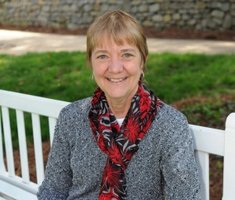
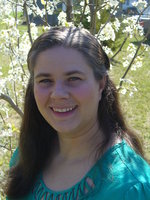
Caren DiefenderferHollins UniversityMeagan HeraldVirginia Military InstituteFriday workshop: Building a Menger Sponge with Business Cards Abstract: This fall the Museum of Mathematics in New York and Queen Mary University of London sponsored the MegaMenger project. Twenty international sites agreed to start building a Level 3 model of the Menger Sponge by folding business cards, with the hope of completing the project by the end of October. Two of the sites were Hollins University in Roanoke, VA and Virginia Military Institute in Lexington, VA. We both made good progress and are continuing to build this semester. Caren Diefenderfer (Hollins), Meagan Herald (Virginia Military Institute) and a few of their students will lead this workshop. We will give a short introduction to fractals and then explain how to fold business cards to create the Menger Sponge model. Please bring 100-150 old (recyclable) business cards with you. (The cards that work the best are not shiny or flimsy.) Each pair of participants should be able to complete a Level 1 Menger Sponge during the workshop. Feel free to visit www.megamenger.com for more specifics on the October international project.
Caren Diefenderfer received her AB from Dartmouth College and her MA and PhD
from the University of California at Santa Barbara. She has been a member of the Hollins Mathematics Department
for over 30 years. She has always enjoyed connecting mathematics with music and/or fiber arts and has
offered "Mathematical Knitting" and "The Music and Mathematics of Change Ringing" in the Hollins January
short term. This fall she taught a first year seminar course titled "Games, Puzzles and Logic." The class
studied patterns and spent one day on fractals. The MegaMenger project was a natural fit and the
students bonded with one another while building the Menger Sponge.
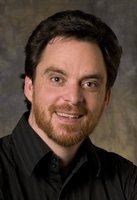
Tim ChartierDavidson CollegeBanquet Address:Linear Thinking: from bracketology to computer graphics Abstract: What's in a matrix? Enter the world of linear systems and see how matrices open the door to a diverse array of topics, from creating a March Madness bracket, to analyzing a car's aerodynamics, to rendering cinematic special effects. We'll also discuss how to engage students majoring in math and other fields to think linearly. Biographical Sketch: Associate Professor of Mathematics and Computer Science at Davidson College, Dr. Tim Chartier specializes in data analytics. Working with Davidson College students, he supplies analytics for the men's basketball team at the college. He's also supplied analytics to men's and women's soccer, volleyball and football. Beyond the college, Tim's consulted on sports analytics problems for ESPN's Sport Science program, the Weather Channel, the NBA and a fantasy sports site. Tim frequently consults businesses on data analytics questions. In 2014, Tim was named the inaugural Math Ambassador for the Mathematical Association of America, which also recognized Dr. Chartier's ability to communicate math with a national teaching award. His research and scholarship were recognized with the prestigious Alfred P. Sloan Research Fellowship. Published by Princeton University Press, Tim wrote Math Bytes: Google Bombs, Chocolate-Covered Pi, and Other Cool Bits in Computing and coauthored the textbook Numerical Methods: Design, Analysis, and Computer Implementation of Algorithms. The Mathematical Association of America published Tim's recent book When Life is Linear: from computer graphics to bracketology. Tim has also been a resource for a variety of media inquiries, which include appearances with NPR, the CBS Evening News, USA Today, and The New York Times. 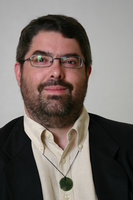
Brian HopkinsSt. Peter's UniversitySaturday Morning Address:The Symmetric Group and Fair Division: Does Knowledge Matter? Abstract: Sports drafts and divorce settlements are examples of situations where players take turns selecting indivisible goods. Like other topics in fair division, the situation is made more interesting because people may value the goods in different ways. In this talk, we focus on the case of two players, where the machinery of permutations is surprisingly applicable. How many possible outcomes are there? In what circumstances do both players get their best possible outcomes? How can one best take advantage of knowing the other's preferences? What happens when a player's motivation switches from greed to spite, the common good, or selfless altruism? In this colorful talk, we'll sample some applied algebraic combinatorics and address these issues along with the provocative question of the title. Biographical Sketch: Brian Hopkins is a professor of mathematics at Saint Peter's University in Jersey City, New Jersey, and teaches game theory and fair division at New York University as an adjunct in the department of politics. He is also active in teacher professional development, especially with the Institute of Advanced Study's Park City Mathematics Institute. Research interests include combinatorial number theory, Ramsey theory on the integers, and mathematics applied to social science. Hopkins is the editor of The College Mathematics Journal and received the 2015 Deborah and Franklin Tepper Haimo Award for Distinguished Teaching of Mathematics. 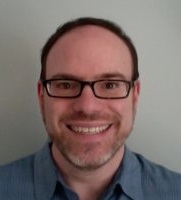
Will TravesU.S. Naval AcademySaturday Afternoon Address: Geometry: Old and New Abstract: In 1639, a sixteen-year old Blaise Pascal generalized a result that had stood for over 13 centuries. The posters announcing his Mystic Hexagon Theorem inspired geometers to think about infinity in new ways that still resonate today. I'll describe how Pascal's work influenced modern Projective Geometry. Along the way we'll see how computer software mixes with 19th century methods to create a new environment for mathematical research. This line of ideas gives us a new way to think about straightedge and compass constructions. I'll describe recent research with David Wehlau that leverages work of Cayley and Bacharach to produce a surprising construction that checks whether 10 points lie on a cubic curve. I won't assume much mathematical background; the talk should be accessible to anyone that's ever computed the determinant of a matrix. Biographical Sketch: Will Traves obtained his Ph.D. from the University of Toronto in 1998, working with Mark Spivakovsky and Karen Smith. Following a brief post-doc with Bernd Sturmfels at U.C. Berkeley he settled at the U.S. Naval Academy, where he currently serves as Chair of the Mathematics department. Together with Amy Ksir and Andrew Bashelor, Will won both the Hasse and Ford prizes for mathematical exposition from the MAA. His recent Math Monthly paper on constructible curves also won the Halmos-Ford prize. Will is a Project NExT brown dot and a former editor of our MAA section's newsletter. He loves playing chess, backgammon, and other games with a mathematical bent. |
Copyright © 2015 - The Mathematical Association of America
Please send comments, suggestions, or corrections for this page to Brian Heinold at heinold@msmary.edu
Last Modified: 05/06/2015 - 11:28am
 The Spring 2015 Meeting of the MD-DC-VA section of the MAA
was be held at
The Spring 2015 Meeting of the MD-DC-VA section of the MAA
was be held at